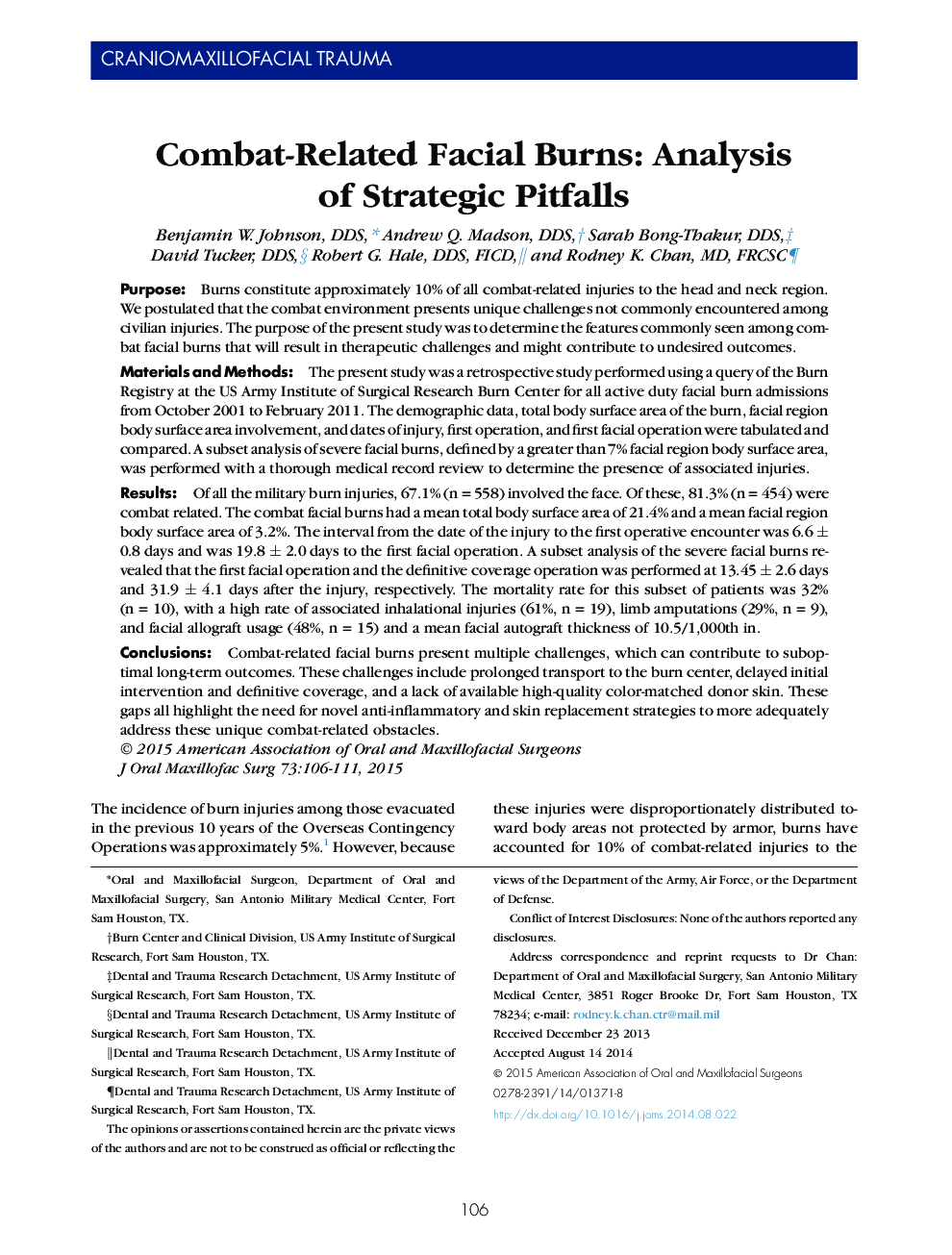| کد مقاله | کد نشریه | سال انتشار | مقاله انگلیسی | نسخه تمام متن |
|---|---|---|---|---|
| 3153286 | 1198028 | 2015 | 6 صفحه PDF | دانلود رایگان |
PurposeBurns constitute approximately 10% of all combat-related injuries to the head and neck region. We postulated that the combat environment presents unique challenges not commonly encountered among civilian injuries. The purpose of the present study was to determine the features commonly seen among combat facial burns that will result in therapeutic challenges and might contribute to undesired outcomes.Materials and MethodsThe present study was a retrospective study performed using a query of the Burn Registry at the US Army Institute of Surgical Research Burn Center for all active duty facial burn admissions from October 2001 to February 2011. The demographic data, total body surface area of the burn, facial region body surface area involvement, and dates of injury, first operation, and first facial operation were tabulated and compared. A subset analysis of severe facial burns, defined by a greater than 7% facial region body surface area, was performed with a thorough medical record review to determine the presence of associated injuries.ResultsOf all the military burn injuries, 67.1% (n = 558) involved the face. Of these, 81.3% (n = 454) were combat related. The combat facial burns had a mean total body surface area of 21.4% and a mean facial region body surface area of 3.2%. The interval from the date of the injury to the first operative encounter was 6.6 ± 0.8 days and was 19.8 ± 2.0 days to the first facial operation. A subset analysis of the severe facial burns revealed that the first facial operation and the definitive coverage operation was performed at 13.45 ± 2.6 days and 31.9 ± 4.1 days after the injury, respectively. The mortality rate for this subset of patients was 32% (n = 10), with a high rate of associated inhalational injuries (61%, n = 19), limb amputations (29%, n = 9), and facial allograft usage (48%, n = 15) and a mean facial autograft thickness of 10.5/1,000th in.ConclusionsCombat-related facial burns present multiple challenges, which can contribute to suboptimal long-term outcomes. These challenges include prolonged transport to the burn center, delayed initial intervention and definitive coverage, and a lack of available high-quality color-matched donor skin. These gaps all highlight the need for novel anti-inflammatory and skin replacement strategies to more adequately address these unique combat-related obstacles.
Journal: Journal of Oral and Maxillofacial Surgery - Volume 73, Issue 1, January 2015, Pages 106–111
